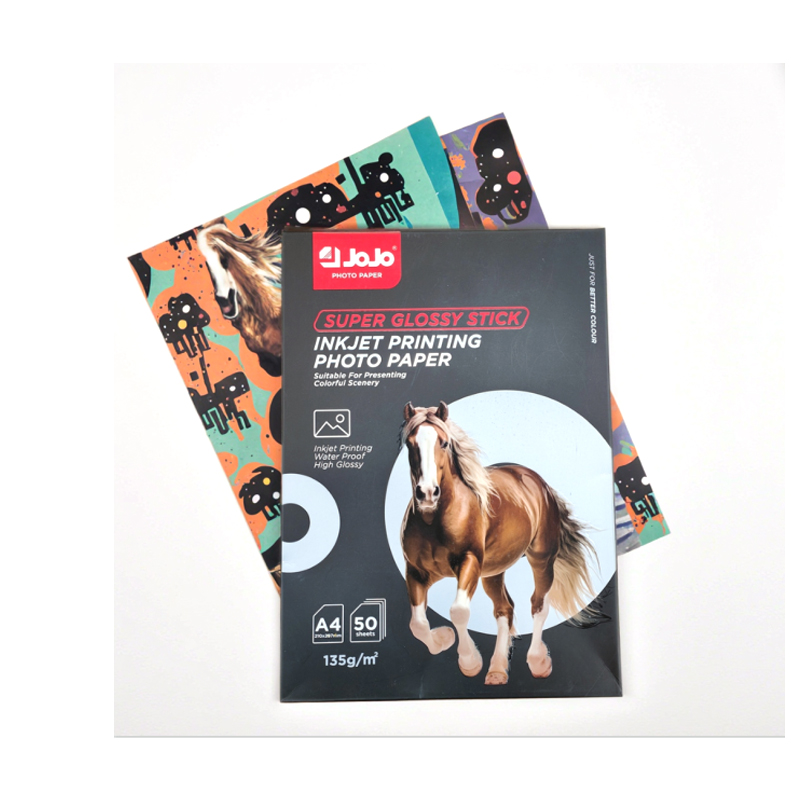If you need any help, please feel free to contact us
Innovations In Inkjet Photo Paper Coating Technologies
In recent years, the inkjet printing industry has undergone significant advancements in coating technologies for photo paper. These innovations have directly influenced the performance, versatility, and visual output quality of inkjet photo paper, especially in applications requiring high gloss and double-sided printing.
At the center of these developments is the growing demand for double sided photo paper inkjet users can rely on for professional and personal printing needs. Unlike traditional single-sided papers, double sided inkjet photo paper requires a balanced coating system that can receive ink effectively on both sides without bleeding or compromising color fidelity. The technology must also address challenges related to drying time, surface texture, and consistency across prints.

Modern high gloss inkjet photo paper has become a preferred choice for photographers, designers, and home users aiming to achieve rich colors and reflective finishes. The glossy effect is primarily achieved through micro-porous or cast-coated surface treatments that allow for rapid ink absorption while providing a shiny, smooth appearance. These surfaces are engineered to bond well with dye or pigment-based inks, preserving color intensity and resisting smudging. The development of new resin-based coatings has further enhanced the water-resistance and longevity of gloss-finished prints.
For double sided inkjet photo paper, manufacturers have introduced dual-layer coating systems that ensure both sides can hold ink without compromising the paper's core stability. One of the key challenges in producing double-sided materials lies in managing the paper's curl behavior. This is often controlled through symmetrical coating techniques and paper base selection. The coating on each side must also exhibit consistent whiteness and texture to ensure uniform print results.
Advancements in nanoparticle dispersion within the coating layer have improved ink fixation on the paper surface, pilot in sharper details and better image definition. This is particularly important for high gloss inkjet photo paper, where clarity and depth of color are essential. Coating formulations now frequently include additives that adjust gloss levels, enhance surface strength, and regulate drying properties.
Another area of focus is environmental performance. As sustainability becomes a growing priority, manufacturers are exploring water-based and solvent-free coating technologies. These new approaches aim to reduce the environmental footprint of inkjet photo paper production while maintaining key performance parameters.
Double-sided photo paper has also seen growth in creative sectors such as brochure printing, photobooks, and custom cards. Double sided photo paper inkjet solutions allow for more flexibility in layout design and content placement. With improvements in coating adhesion and surface calibration, users can now print high-resolution images on both sides with small show-through.
Compatibility with a wide range of printers is another factor driving innovation. Coating technologies must ensure that double sided inkjet photo paper and high gloss inkjet photo paper perform consistently across various printer brands and models. This involves standardizing paper weight, surface energy, and ink-receptive chemistry.
In terms of surface finish, the transition between glossy and satin coatings provides more choices for users. Some applications may call for a gloss finish on one side and a matte or satin finish on the other. This hybrid approach is supported by flexible coating systems capable of adapting to different surface treatment processes.
In conclusion, the evolution of coating technologies in the inkjet printing sector is reshaping what users can expect from photo paper. From the enhanced performance of double sided inkjet photo paper to the refined appearance of high gloss inkjet photo paper, these innovations are expanding the boundaries of digital printing applications. By addressing key technical challenges and introducing more sustainable practices, the industry is poised to continue offering high-quality materials for diverse creative and commercial purposes.

 English
English Español
Español 中文简体
中文简体 Português
Português

